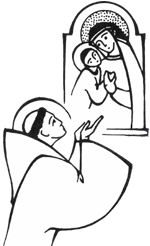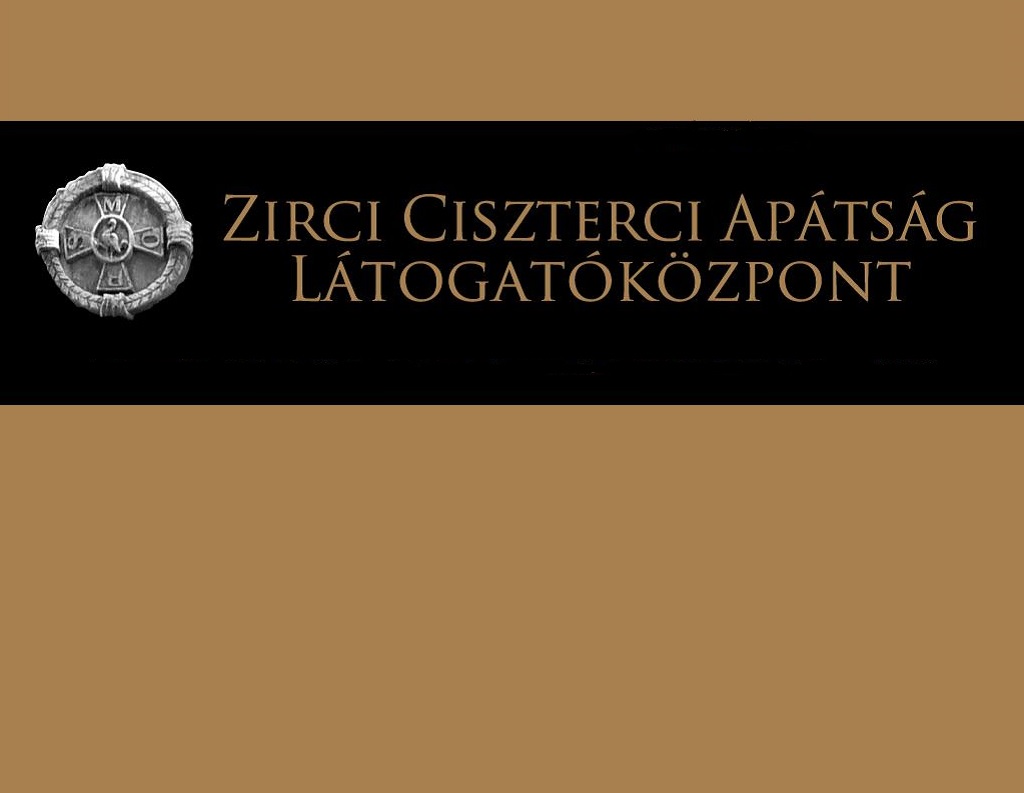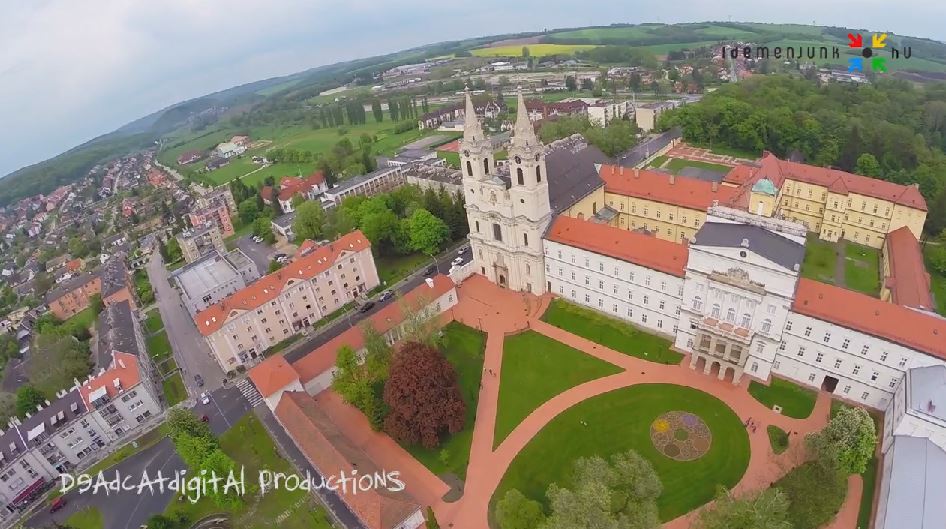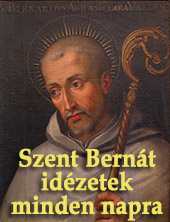Cistercian Spirituality
The Cistercian Order is a deeply religious branch of the ancient stem of the monasticism of St Benedict, which sprouted in the 12th century. When abbot St Robert and companions moved out of the Benedictine monastery of Molesme into the Cistercium, their aim with the foundation of the novum monasterium was that they should live in the greatest fidelity to the Rules of St Benedict.
 This humble ascetical venture resulted in a success that surpassed every expectation. One needs to look at its secret mainly in the lively resonance that the spirituality of Cîteaux aroused in its members who were sensitive to the same ideals of its religious epoch. By the middle of the 12th century the Cistercian Order found a foothold in every country of Europe and could call 350 monasteries as its own. This powerful growth could rightfully be attributed, beside the work of the Holy Spirit and the needs of that age, to the wonderful personality of St Bernard, the most influential character of the Order. The specialists differ in their opinion as to whether or not one can speak of a specifically Cistercian spirituality. Whatever the state of the matter, everyone accepts the existence of a Cisterican school, that is a group of authors in whom it is impossible not to notice a significant intellectual and spiritual formative similarity, some affinity in taste, despite the fact that the members of the group come from the most diverse regions. The head of this school, indisputably is St Bernard. On the basis of their teaching we endeavour - even if only in a sketchy form - to draw up the main characteristics of the spirituality of Cîteaux.
This humble ascetical venture resulted in a success that surpassed every expectation. One needs to look at its secret mainly in the lively resonance that the spirituality of Cîteaux aroused in its members who were sensitive to the same ideals of its religious epoch. By the middle of the 12th century the Cistercian Order found a foothold in every country of Europe and could call 350 monasteries as its own. This powerful growth could rightfully be attributed, beside the work of the Holy Spirit and the needs of that age, to the wonderful personality of St Bernard, the most influential character of the Order. The specialists differ in their opinion as to whether or not one can speak of a specifically Cistercian spirituality. Whatever the state of the matter, everyone accepts the existence of a Cisterican school, that is a group of authors in whom it is impossible not to notice a significant intellectual and spiritual formative similarity, some affinity in taste, despite the fact that the members of the group come from the most diverse regions. The head of this school, indisputably is St Bernard. On the basis of their teaching we endeavour - even if only in a sketchy form - to draw up the main characteristics of the spirituality of Cîteaux.One of the basic chapters of Christian wisdom of the 12th century was getting to know one's self, one's own soul. "Acquaintance with one's own self is the first step on the stairway of getting to know God" emphasizes St Bernard. Getting to know the soul, chiefly in its mystical image of God, in order that with its assistance one can discover the paths of spiritual life that lead to a deeper recognition of God. Before all else they are interested in experiencing God. Although this is the work of grace, the soul's experience itself happens by relying on its abilities (memory, intellect, the will).
Our Cistercian writers, following in the footsteps of the Church fathers, build their teaching regarding the inner union with God on some expressions of the Bible: the soul is created in the image and likeness of God (Gen 1:26), its final purpose is the happy vision of God (... we shall see him as he really is. 1Jn 3:2). Between these two terminals flows life on earth, the life of sinful man who, nevertheless, was redeemed; in baptism he put on the likeness of Christ and through him slowly he must change to resemble the likeness of God. So earthly life is a time for ascesis, for practice in virtue, for death of the old self and for the soul's renewal at its roots. Our aim is more and more to take off the distortion (dissimilitudo) caused by sin, and to regain a fuller acquaintance with ourselves, that of the desired similarity (similitudo). This is the programme that William of St-Thierry summarizes thus: "Oh image of God, consider your greatness, within it let the face of your Creator glow. Throw yourself fully into getting to know your own self and Him whose image you are." The most suitable framework for carrying out this programme they see naturally within the monastic life. The monk must free himself more and more of the domination of the senses, so he can progress from the stage of self-love to that of loving God, and thus become fit in contemplation for union with God. But then our Cistercian teachers also realize that on the road to God our human nature cannot cope without those impressions that are obtained through the senses. William of St-Thierry who walks on the heights of mystical prayer turns without embarrassment to his imagination during prayer "because my Lord you permit it and look upon it kindly that my poor and still weak soul should follow its nature and apply its fantasy on your humiliations. In this way I enfold in my arms the manger of the newborn, adore his holy humanity, press my lips on the wounds of the crucified, put my hand in the place of the wounds, I exclaim: My Lord and my God!" Similar statements can be read from the other fathers, too.
Our first  Cistercian fathers attested to their intimate deep devotion to Christ's holy humanity, to such an extent that some researchers highlighted the esteem given to the incarnate Word as one of the characteristic traits of Cistercian spirituality. However, it can be detected that for them the devotion is but a step toward spiritual contemplation of God (the Word) on a higher plateau. They attest to their blazing love of Christ in more and more beautiful lines of writing. Right from the beginning of his monastic life St Bernard endeavoured to hold in his heart the memory of Jesus' actions, sufferings, but especially his Passion, and declares that he will retain this disposition until his death. "My highest philosophy is: to know Jesus the crucified." Blessed Elréd also puts before us the details of Our Lord's sufferings with deep empathy: "You have seen his opened arms as if to embrace you to himself; you have observed, he opened up his bosom as it were to nourish you with his milk. With what sweet devotion have you looked upon our Lord bound up, besmeared with spittle, struck in the face..."
Cistercian fathers attested to their intimate deep devotion to Christ's holy humanity, to such an extent that some researchers highlighted the esteem given to the incarnate Word as one of the characteristic traits of Cistercian spirituality. However, it can be detected that for them the devotion is but a step toward spiritual contemplation of God (the Word) on a higher plateau. They attest to their blazing love of Christ in more and more beautiful lines of writing. Right from the beginning of his monastic life St Bernard endeavoured to hold in his heart the memory of Jesus' actions, sufferings, but especially his Passion, and declares that he will retain this disposition until his death. "My highest philosophy is: to know Jesus the crucified." Blessed Elréd also puts before us the details of Our Lord's sufferings with deep empathy: "You have seen his opened arms as if to embrace you to himself; you have observed, he opened up his bosom as it were to nourish you with his milk. With what sweet devotion have you looked upon our Lord bound up, besmeared with spittle, struck in the face..."
 Cistercian fathers attested to their intimate deep devotion to Christ's holy humanity, to such an extent that some researchers highlighted the esteem given to the incarnate Word as one of the characteristic traits of Cistercian spirituality. However, it can be detected that for them the devotion is but a step toward spiritual contemplation of God (the Word) on a higher plateau. They attest to their blazing love of Christ in more and more beautiful lines of writing. Right from the beginning of his monastic life St Bernard endeavoured to hold in his heart the memory of Jesus' actions, sufferings, but especially his Passion, and declares that he will retain this disposition until his death. "My highest philosophy is: to know Jesus the crucified." Blessed Elréd also puts before us the details of Our Lord's sufferings with deep empathy: "You have seen his opened arms as if to embrace you to himself; you have observed, he opened up his bosom as it were to nourish you with his milk. With what sweet devotion have you looked upon our Lord bound up, besmeared with spittle, struck in the face..."
Cistercian fathers attested to their intimate deep devotion to Christ's holy humanity, to such an extent that some researchers highlighted the esteem given to the incarnate Word as one of the characteristic traits of Cistercian spirituality. However, it can be detected that for them the devotion is but a step toward spiritual contemplation of God (the Word) on a higher plateau. They attest to their blazing love of Christ in more and more beautiful lines of writing. Right from the beginning of his monastic life St Bernard endeavoured to hold in his heart the memory of Jesus' actions, sufferings, but especially his Passion, and declares that he will retain this disposition until his death. "My highest philosophy is: to know Jesus the crucified." Blessed Elréd also puts before us the details of Our Lord's sufferings with deep empathy: "You have seen his opened arms as if to embrace you to himself; you have observed, he opened up his bosom as it were to nourish you with his milk. With what sweet devotion have you looked upon our Lord bound up, besmeared with spittle, struck in the face..."Christ's humanity is a path for us which leads to divinity. Bernard speaks of it like this: "He was invisible, unapproachable, beyond the ability of our human intellect to comprehend... Now however, he wanted us to be able to hold, see and understand him. How? - you ask. By lying in a manger, by resting in His Mother's virgin lap, teaching on the mountain, spending the night in prayer, hanging on the cross: When I think through all this, it is God on whom I think. In all this I am touching my God himself."
If their devotion in respect of the Lord's humanity was so characteristic in their spirituality, then we are not surprised either at their - in the 12-13th century unusually lively - respect for Mary, of which almost every one of them gives evidence in his writings. A sign of this tender love can be seen also in the fact that right from the earliest times the Cistercians place their houses under the patronage of the Blessed Mary.
St Bernard extols the virtues of the Holy Virgin especially in his four famous sermons: her humility, modesty, virginal purity and the compassion she shows toward us. He points particularly to her place in our salvation history, her trustful spirituality, and to her exceptional attachment that bonded her with Christ. Abbot Guerricus emphasizes that the mother of the Head is also the mother of the members, therefore mother of every Christian: "This Virgin, who alone is virgin and mother, whose glorious privilege is that she brought into the world the only begotten Son of the Father, in her Son is clasping to herself all the members of her Son." The meditations of Izsák Stellai regarding Mary are deep and original. The roots of his devotion to Mary are sunk deeply into theology. He puts into words that Mary-Church parallel which is very much liked today: in baptism we were born from the virgin Church and the Holy Spirit, just like Jesus was born from the Holy Spirit and the Virgin Mary.
What modern research ascertains about the theology of St Bernard can be applied to the whole Cistercian school. Their teaching is characterized by moderation, freedom from excesses and onesidedness. "In Christ everything has value for us" - writes the abbot of Clairvaux - "everything was necessary. And his suffering has not brought greater benefits for us either, than his glorification." They did not cultivate dolorous theology, they did not glorify pain for itself. For them the redemption: the mystery of love, is a path toward joy. The suffering of Jesus freely accepted is proof of his compassion, love and empathy toward our human lot.
For our Cistercian writers the aim first of all was not the rational exposition of the concepts, but rather the warming of the hearts. In this they followed the footsteps of the Church fathers. In the noble meaning of the word they are existentialists because they are interested in being, in life, and not in the abstract essence of things. That's why we feel that their writings are close to us.
They are not some phantom figures without body, but monks of flesh and blood in whom human feelings surge. An example of this, among others, is the classic sermon of St. Bernard, which he delivered in the monastic community at Clairvaux on the occasion of the death of his brother Gellért. What a volcanic eruption of feelings in the face of the painful reality of death!
When they are talking about spiritual life they are not getting lost in theoretical expositions but they refer to experience, to inner adventures, occasionally they disclose their own inner mystical experiences as well.
In the Cistercian monasteries, without a doubt, hard ascesis was practised. This came from their serious desire to follow Christ. They took it on out of love, but sometimes felt its weight as well. Abbot Elréd humbly professes: "The weight of the yoke on the sons of Adam is heavy and it will press on them from birth until they return to the lap of our mutual mother. Poverty weighs us down, but weakness also the same way. Sleepiness besieges, laziness dispirits us." They were people, too, who happened from time to time to come to a sudden standstill under their burden.
Our early fathers in their younger years already absorbed the special love of the liturgy, the Opus Dei. They lived their whole life in the spirit of the liturgy. Its rhythm was guided by the hours of prayer, the seasons and the feasts. As monastic writers, proclaimers of the word, they draw their inspiration in essence from the liturgy; year after year they follow the cycle of the church's year and the feasts of the saints. In response to the encouragement of the Second Vatican Council that "the spirit of the liturgy and its strength should deeply imbue the pastors", we can reflect with pride on our Cistercian ancestors' proclamation of the word in which this desire was perfectly fulfilled. St Bernard already took care that the "lively feeling" toward the Scriptures, the Word of God, contained among the wishes of the II. Vatican Council, should be effected in the monasteries, when in his Rule he made the lectio divina the duty of the monks. Our fathers obtain most of their thoughts and store of expressions from the Writings.
The abbot standing at the head of the monastery was, out of office, educator of those who were assigned to him. Some of them had previously functioned as novice masters and in this way they were able to develop special talents suited for working with the youth. It was noted about abbot Elréd that the: "attraction rooted in his nature, and the constant worry of an educator" bound him to those who depended on him during his time as magister, and leading them back to God through their education (educatio) he would raise (elevatio) them, in the nice theological meaning of the word, to a more fulfilled, happier life. What a beautiful example it is today also for those who are called to train the youth!
And finally the Cistercian school's most characteristic subject, the spirit of Cistercian life is: love. The love of God. The Cistercian monastery's schola caritatis: to climb the steps of cleansing love, so the soul should finally reach the intimate attachment with the Word, as of an engaged couple. In the Benedictine monasteries of the era they are working out the theology of the mysteries; the Cistercians are engaged in living out the mysteries of the enigmatic theology (St Bernard, William of St-Thierry).
The indispensable condition of life in the monastery is the neighbour, the love toward our brothers. St Bernard who wants to love his monks like a mother, declares: "I can not envisage how it can be said of someone that he is alive when he does not love those who are in his neighbourhood." Elréd and others in their writings also give evidence of that spiritual climate in which living together can truly be paradisus claustralis.
In the first half of the 12th century a new feeling of life, a certain Christian humanism starts spreading its wings. The outlines of a picture of a new man are appearing. The interest turns toward the person, the individual, new psychological sensitivity manifests itself. To this development the Cistercian school contributes significantly when it enriches the objective contemplation of the Christian mystery, the pietas, with the warm colours of devotion.
Fr. Ignác Sulyok OCist
Literature used:
Cistercian Spirituality, Eisenstadt, 1982.
Fracheboud, André: Les premiers spirituels cisterciens. Paris, 1985.
Thomas, Robert: Spiritualité cistercienne, Beernem, 1976.
Leclercq, Jean: "Une doctrine spirituelle pour notre temps?" In: Dottrina della vita spirituale nelle opere di S. Bernardo, Roma, 1991.





